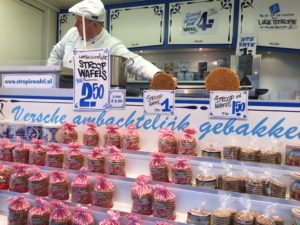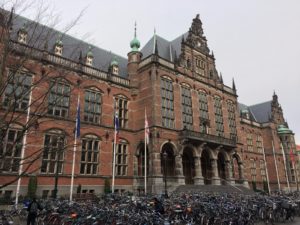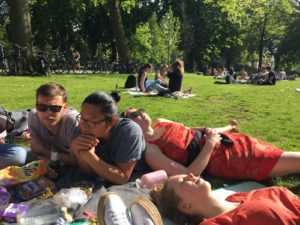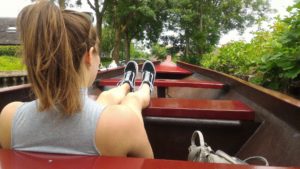Sixty percent of the Dutch population lives below sea level. The centuries old water management practices in the Netherlands are what keeps much of the country afloat. It is precisely for this reason that I wanted to spend my semester abroad in the Netherlands.
Spring of 2017, I studied in the city of Groningen; a small town in the northern part of the Netherlands (Nope! Not Amsterdam). My program was within the University of Groningen’s Faculty of Spatial Sciences. It was called Spatial Problems and Spatial Planning: the Dutch Experience. I’d long been developing a strong interest in the city planning in a country which has already mastered coping with rising seas. From the Delta Works, to the Afsluitdijk, the Netherlands is an exemplary laboratory for managing the sea. “God created the world, with the exception of the Netherlands. That the Dutch created themselves”, as Voltaire put it in the eighteenth century.
I found the program at the University of Groningen and was immediately intrigued. It was offered through the Council on International Educational Exchange (CIEE) for American students at universities with contractual agreements. Stevens, however, was not one of those universities. As an engineering student, exchange opportunities are in short supply. However, studying abroad was really important to me. When I realized how few options there were, I began my own research and curated my own experience. Planning was time consuming, administratively intensive and required many meetings with advisors. The process was very discouraging at times, but in the end it was well worth the effort. Susi Rachouch of the study abroad office was extremely helpful every step of the way.
Groningen was an amazing student city full of restaurants, bars, markets, museums, and canals. Rated the happiest rated city in one of the happiest countries in the world, the relaxed feel of Groningen was unlike anything else. The Netherlands has the largest percentage of part time workers. Yet surprisingly, it is still one of the most productive countries in the world. It is one of the healthiest and happiest countries on earth. The Netherlands is also one of the most densely populated nations. Space is not taken for granted and water is an official land use category.
The Netherlands is extremely bike friendly. The country also has an extensive train system. Traveling through the European Union is quite simple and relatively inexpensive. I saw ten countries apart from the Netherlands, including Belgium, Hungary, Slovakia, England, Germany, Denmark, Sweden, Portugal, Morocco and Iceland on my way home.
Although it’s nice to be back home and I look forward to finishing my degree at Stevens, I really did not want to leave the Netherlands. It’s been tough readjusting to life back in the States. In many ways, my time in the Netherlands highlighted the flaws and unsustainable practices in America.
Condensing and communicating my experiences abroad has been one of the most difficult parts of returning from the Netherlands. I’ve never learned so much in such a short period of time.
One of my professors in the Netherlands often said, “It’s possible to learn just as much about your own country as you do about your host country while you study abroad. You realize there are somethings you truly hate or maybe things you always took for granted.” By moving yourself outside of what you’ve always known, you learn immensely. I am so grateful for the adventure I was able to have. I made friendships that I know ill last forever. Hoping to see you again soon Holland! Tot ziens!





Be First to Comment